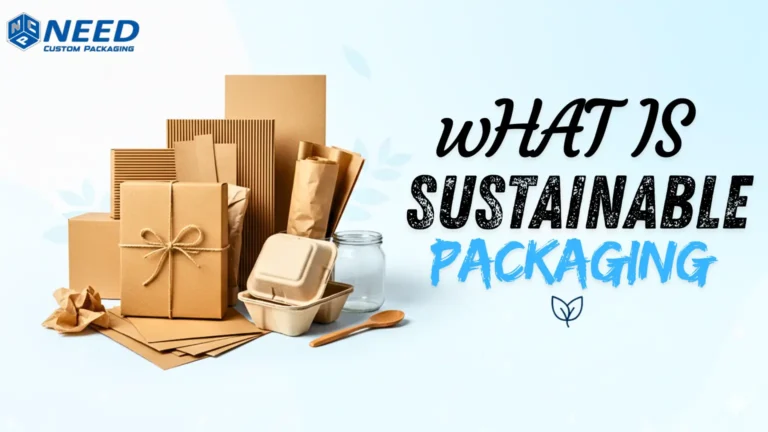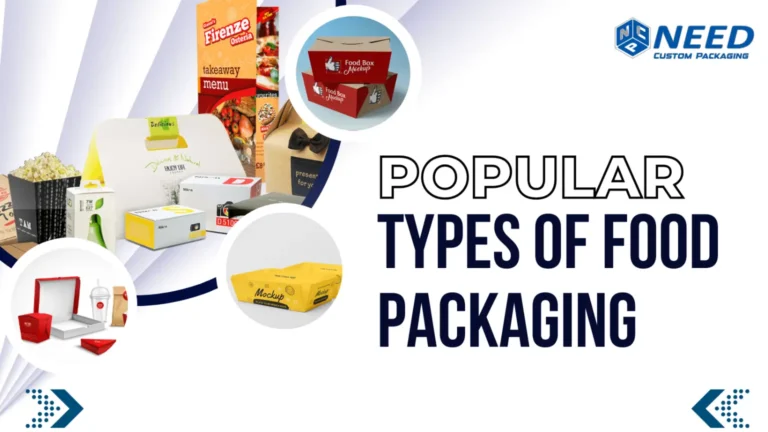Have you ever measured the cardboard box weight? Whether you are managing inventory, running an e-commerce brand, or owning a small business, the weight of cardboard packaging helps you streamline logistics easily. Weight plays a prominent role in everything from warehouse storage planning and product safety to sustainability purposes and shipping costs.
Understanding how much a cardboard box weighs helps streamline business operations by reducing waste and saving money. It is important to understand that all boxes are not the same in terms of dimensions. A heavier box than necessary can eat up your budget easily, while a box with a minimum box weight ensures cost-effective shipping and efficient storage.
How Much Does a Cardboard Box Weigh in Pounds?
The average weight of a 12x12x12 corrugated cardboard box is 4 to 6 pounds. A single-wall box weighs 4 pounds while a double-wall box weighs 6 pounds. It is the perfect option for the storage and shipment of different products.
Different factors like staples, corrugated material, and wall thickness impact the overall weight. You can use double-wall packaging boxes to pack and ship heavier products, such as laptops and books.
How Much Does a Cardboard Box Weigh in Ounces?
You can easily convert pounds to ounces to understand the weight of a standard single-wall or double-wall 12x12x12 corrugated cardboard box in ounces. You must remember that a pound is equal to 16 ounces.
The weight of a 4-pound single-wall box = 4 x 16 = 64 ounces
The weight of a 6-pound double-wall box = 6 x 16 = 96 ounces
It is important to note that each paper has variable grammages and factors that impact the cardboard box weight.
How Much Does a Cardboard Box Weigh in Kilograms?
You must consider this conversion factor to convert the weight of a packaging box from pounds to kilograms.
1 pound = 0.453592 kilograms
You can follow these steps to calculate how much a cardboard weighs in kgs, apart from using the conversion.
- Measure and convert dimensions from inches to centimeters to calculate the box’s volume in cubic centimeters.
- Each inch is equal to 2.53 cm, and multiply 12 x 2.54 = 30.48 centimeters for each box dimension.
- Measure the volume of the box by calculating the dimensions in centimeters.
- Multiply the height, width, and length to calculate volume in cm³.
- Divide the volume by 6000 to get the value in kilograms.
Volume = 30.48 cm x 30.48 cm x 30.48 cm = 28316.85 cm³
Weight = 28316.85/6000 = 4.72 kilograms
How Much Does a Cardboard Box Weigh in Grams?
You can get the precise measurement if you are looking to calculate the weight in grams. It’s simple because you have to multiply the packaging’s weight in kilograms by 1000.
Weight = 4.72 x 1000
Weight = 4720 grams
You can also convert the weight of a box from pounds to grams using the conversion factor:
1 pound = 453.592 grams
Standard Cardboard Box Weights
The typical weights of different boxes are below:
| Box Type | Dimensions (LxWxH) | Weight (lbs) |
| Small Box | 12 x 9 x 6 | 0.5-0.75 |
| Medium Box | 18 x 14 x 12 | 1.5-2 |
| Large Box | 24 x 18 x 18 | 2.5-3 |
| Extra-Large Box | 24 x 20 x 24 | 4-5 |
Which Factors Determine the Weight of a Cardboard Packaging Box?
How much does a box weigh? The average weight of cardboard boxes ranges from 0.5 to 5 pounds, depending on different factors. Let’s take a look at the factors contributing to overall cardboard box weight:
Material Composition
Cardboard is usually composed of paper pulp, which is extracted from the recyclable wood chips or paper products. Different materials, including cardboard, are used to manufacture custom box packaging.
- Kraft Paper: Popular for its durability and strength.
- Test Liners: Ensure the ideal finish and structure.
- Mediums: Craft the fluting, offering a unique wavy layer to the corrugated cardboard.
The combination of materials with thickness and density impacts the overall weight of a cardboard box.
Box Dimensions
The dimensions of a cardboard box, including height, width, and length, determine its overall volume. Larger boxes are usually made from more material, boosting their overall weight. For instance, a 12x12x12-inch cardboard box weighs more than a 6x6x6-inch box due to the high use of cardboard material.
Wall Construction
A cardboard packaging box is available in different wall constructions. It is important to note that each additional layer increases the overall box’s weight, which means triple-wall boxes are the heaviest option due to the high use of material.
- Single-Wall: One fluted paper layer between two liners.
- Double-Wall: Two fluted paper layers between three liners.
- Triple-Wall: Three fluted paper layers between four liners.
Additional Features
Different features of custom boxes, such as closures, coatings, reinforcements, and handles, contribute to a box’s weight. For instance, laminated boxes, which ensure ideal moisture resistance, weigh more than the packaging without the laminated counterparts.
How to Calculate the Weight of a Cardboard Box
How much does a small cardboard box weigh? A small cardboard packaging box weighs 0.5 to 1 pound. It is necessary to ensure accurate calculations, considering construction, material density, and dimensions. Let’s follow this step-by-step guide to calculate cardboard box weight:
Step 1: Measure Box Dimensions
It is important to use a measuring ruler or tape to determine the height, width, and length of the cardboard in inches.
Step 2: Calculate Volume
It is time to multiply the height, width, and length of the box to calculate the volume in cubic inches. Volume (V) = Length (L) x Width (W) x Height (H)
Step 3: Determine the Density Factor
It is essential to note that the density factor varies according to the type of cardboard. Let’s explore the approximate density:
- Single-Wall: 166 cubic inches per pound.
- Double-Wall: 139 cubic inches per pound.
- Triple-Wall: 139 cubic inches per pound.
Step 4: Calculate Weight
How much does a small box weigh? You can divide the box’s volume by the density factor to estimate the weight in pounds.
Weight (lbs) = Volume/Density Factor
For instance, a 6 x 6 x 6 inch double-wall box:
Volume = 6 x 6 x 6 = 216 cubic inches
Weight = 216/139 ≈ 1.5 lbs
Step 5: Convert to Other Units
You can convert the cardboard box weight into other units:
- Grams: Multiply the box’s weight in kilograms by 1,000.
- Kilograms: Multiply the box’s weight in pounds by 0.453592.
- Ounces: Multiply the box’s weight in pounds by 16.
Average Weights for Common Box Sizes
You can use alternatives to cardboard to control the weight of your packaging boxes. However, it is important to understand the average weight of cardboard boxes available in different dimensions to estimate the shipping costs.
| Box Size (Inches) | Average Weight (Grams) |
| 6 x 6 x 6 | 120-150 |
| 12 x 12 x 12 | 200-250 |
| 18 x 18 x 18 | 300-350 |
| 24 x 24 x 24 | 400-450 |
Important Note: The average weight of cardboard boxes can differ depending on factors.
Understanding Dimensional Weight
How heavy is a cardboard box? Shipping carriers use dimensional shipping box weight to determine the shipping charges. This DIM weight considers the package’s volume in relation to its actual weight.
The formula for dimensional weight is as follows:
DIM Weight = (L x W x H)/DIM Factor
Where the DIM factor is:
- Domestic Shipments: 166 cubic inches per pound.
- International Shipments: 139 cubic inches per pound.
It is important to note that shipping cost is based on the greater of the DIM weight or actual weight.
What are the Weight Differences Between Corrugated and Non-Corrugated Cardboard Boxes?
How much does a box weigh? The weight varies between the non-corrugated and corrugated cardboard boxes.
| Feature | Corrugated Cardboard | Non-Corrugated (Paperboard) |
| Structure | Fluted layers between liners | Thinner, solid sheet |
| Weight | Heavier | Lighter |
| Common Use | Heavy-duty packaging, shipping | Cosmetic, cereal boxes |
This difference helps you to select the right custom packaging boxes for the weight-sensitive products.
Different Industries and Their Box Weight Requirements
Various industries have distinctive packaging specifications. Let’s explore how the cardboard box weight plays a significant role in different sectors:
- Apparel: Compact and ultra-light apparel boxes for affordable shipping.
- Electronics: Shock-resistant and heavier boxes are ideal for product protection.
- E-Commerce: Lightweight and protective boxes for product safety and cost-effective shipping.
- Food and Beverage: Laminated and corrugated food boxes for moderate weight and hygiene.
- Pharmaceutical: Lightweight but tamper-proof boxes are essential.
Balance Cardboard Box Weight vs Durability
It is true that heavier boxes are not always the better packaging options. You need to maintain the ideal balance for the following reasons:
- Underweight Boxes: Risk the product damage or structural failure.
- Overweight Boxes: Add to environmental impact and costs.
It is a good strategy to ensure the burst strength evaluations and conduct compression tests to determine the least box strength without exceeding the weight.
Apps and Tools for Accurate Weighing of Cardboard Boxes
- Box Weight Calculators: Packaging suppliers’ apps or websites, such as ShipStation or Box Genie, offer these calculators for weight measurement.
- Digital Shipping Scales: Ideal for fulfillment centers with accuracy to the gram.
- Mobile Apps: Use augmented reality, such as AR Ruler (Android) or MeasureKit (iOS), to measure cardboard box weights and dimensions.
Shipping Cost Calculators Based on Box Weight by Different Carriers
Different carrier services offer the following tools to calculate the shipping costs depending on the dimensional and actual weight:
| FedEx | Tool Name |
| DHL | Express Rate Quote |
| FedEx | Shipping Rate Calculator |
| UPS | Calculate Time and Cost |
| USPS | Postage Price Calculator |
You need to provide the weight and dimensions of your cardboard shipping boxes to calculate the correct rate while avoiding the surprise fee.
Optimization of Cardboard Box Weight for Sustainability
What is cardboard? It is a heavy-duty paper material used in packaging and boxes. You can reduce the weight of cardboard packaging to maintain environmental sustainability while lowering shipping costs. Let’s follow these strategies for the weight optimization:
- Use Lightweight Materials: Choose the lighter fluting layers or thinner liners.
- Eliminate Unnecessary Features: Don’t consider additional reinforcements or coatings.
- Optimize Box Design: Consider appropriate box designs and reduce excessive material.
- Recycling: Ensure that boxes are recyclable, minimizing environmental impact.
Tips to Handle Cardboard Box Weight
- Use a Scale: Prefer a digital shipping scale to measure the accurate weight.
- Follow Carrier Guidelines: Various carriers can have different guidelines for the DIM factors and weight.
- Consider Packaging Materials: The weight of packaging materials such as foam and bubble wrap adds to the shipping weight of the cardboard packaging box.
- Weigh Before Shipping: Always weigh the packaging box before shipping for accurate cost calculations.
Buy Cardboard Boxes in Desired Dimensions and Weight Today
Understanding the weight of a cardboard is necessary for environmental responsibility, cost management, and seamless shipping. It is crucial to consider different factors such as additional features, wall construction, dimensions, and material composition to ensure accurate calculation of cardboard box weight. Let’s get the customizable cardboard packaging boxes with ideal dimensions and weight from Need Custom Packaging, availing the discounts!
FAQs
How much does a cardboard box weigh?
A typical cardboard box weighs between 0.5 and 5 pounds.
How much does a 12x12x12 cardboard box weigh?
A 12x12x12 cardboard box weighs 4-6 pounds.
Why is my cardboard box heavier than expected?
Your cardboard is heavier due to features such as double-wall fluting, printing ink, or lamination.
Do recycled boxes weigh more or less than new ones?
The recyclable packaging boxes weigh less than the new ones because fiber becomes lighter, but this reduces the packaging’s durability.
Can I reduce box weight without compromising product protection?
Yes, you can reduce the weight of the box without compromising the safety by choosing precise packaging with protective inserts.
Are custom-sized boxes lighter?
Yes, custom boxes are usually lighter due to minimal material waste.
What’s the lightest box I can use for fragile items?
You can use a single-wall box with internal cushioning, such as foam or molded pulp, for fragile products.









